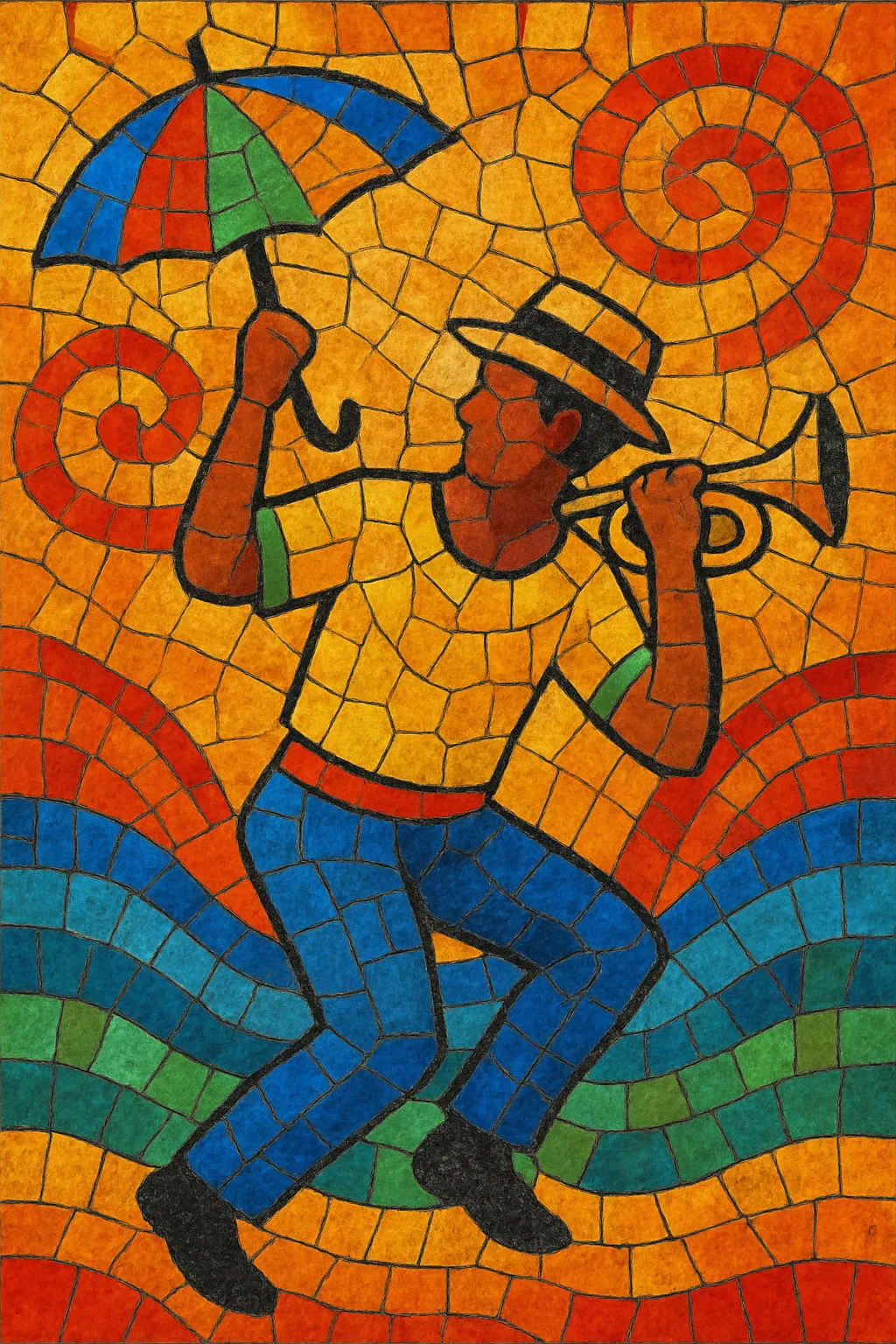Frevo-canção is the sung, radio-friendly branch of Pernambuco’s carnival music, frevo. While it retains the urgent 2/4 march feel and brilliant brass colors of frevo de rua, it slows the tempo slightly to make room for memorable vocal melodies and verses.
Typically set in bright major keys, frevo-canção features syncopated accompaniments, crisp snare figures, and a buoyant, dance-first energy. Lyrically, it celebrates Carnival, Recife/Olinda pride, and affectionate nostalgia; choruses are often anthemic and easy to sing in the streets. Arrangements range from full frevo brass orchestras to smaller radio ensembles, and in later decades, electric instruments joined to project the style on large carnival sound systems.
Frevo emerged in Recife and Olinda at the turn of the 20th century from military band marches, polkas, maxixe, and choro. As Carnival music entered the age of mass media, composers and singers adapted the instrumental, high-velocity frevo de rua into a singable format—frevo-canção—giving it lyrical narratives and radio-ready forms.
The golden age of frevo-canção coincided with Brazilian radio’s rise. Composers such as Capiba and Nelson Ferreira shaped the genre’s melodic identity, while iconic interpreters like Claudionor Germano popularized these songs nationally. The music kept the characteristic 2/4 drive but favored tuneful refrains and sentimental, celebratory words, becoming Carnival anthems across Pernambuco.
As Carnival stages and crowds grew, frevo-canção arrangements expanded, sometimes integrating guitars, keyboards, and amplified ensembles, anticipating the trio elétrico format. Artists from broader MPB circles, including Alceu Valença and Elba Ramalho, brought frevo-canção aesthetics to national stages, recordings, and television.
Frevo-canção continues as a living Carnival tradition and a repertoire staple for Pernambuco singers and orchestras. While instrumental frevo enjoyed jazz-informed revivals (e.g., SpokFrevo Orquestra), frevo-canção remains central in parades and concert programs, and it has influenced Bahia’s axé circuitry and Recife’s mangue beat generation.


